
As we have adapted to the technology that surrounds us (computers, telephones, televisions, consoles, appliances ...) we have stopped exercising memory, we want everything done, even remembering our phone number (when entering it in the phone book it is no longer necessary to memorize it).
But not entirely, since this social change has forced us to memorize other types of data: passwords, that number, name or code of figures and letters that we should NOT write anywhere if we do not want someone with bad intentions to have access to our data, finances, personal images ... A solution for don't memorize hundreds of passwords, is to use password managers like Firefox Lockwise, 1Password, LastPass, Dashlane ...
This type of application allows us not only to store the password of a website, but also allows us to save the page to which it gives us access so that if we visit that web page, automatically will jump the application to remind us.
If we go off the internet, we also find passwords that we must memorize, such as the alarm, the unlock code of our mobile or, without going too far, the password of a Wi-Fi network. When we connect a device to a Wi-Fi network, the device (be it a computer, smart TV, smartphone, tablet, console ...) stores it in its registry for connect automatically whenever you need it.
But of course What if we have forgotten the Wi-Fi password? Nothing serious really happens, since thanks to the different methods that I show you below, you will quickly be able to recover it.
Look under the router
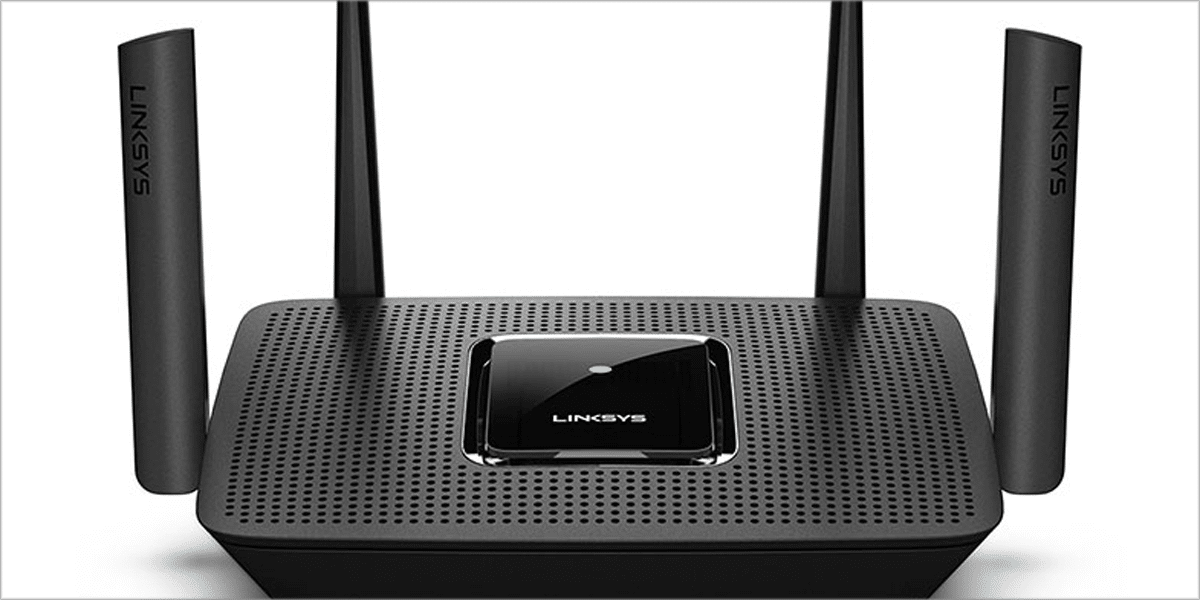
Sometimes the most obvious solution is the last one we consider. The operators want prevent users from collapsing their switchboards with questions of this type, questions about what is the password of your connection. The solution is as simple as including both the SSID (Wi-Fi network name) as the password at the bottom of the device.
It is likely that in the router box we can also find that information but if we consider that it is usually the first thing we throw awayIt is not a suitable place for the user to keep it in case they have to remember it.
From your Android mobile or tablet
Until the release of Android 10, Google did not allow users to access passwords for Wi-Fi networks stored on their devices, although it was possible doing root, a process that takes time and that it is not always possible to do in all terminals.
If your terminal is managed by Android 10 or higher, you can quickly know what is the Wi-Fi password of your network following the steps that I detail below:
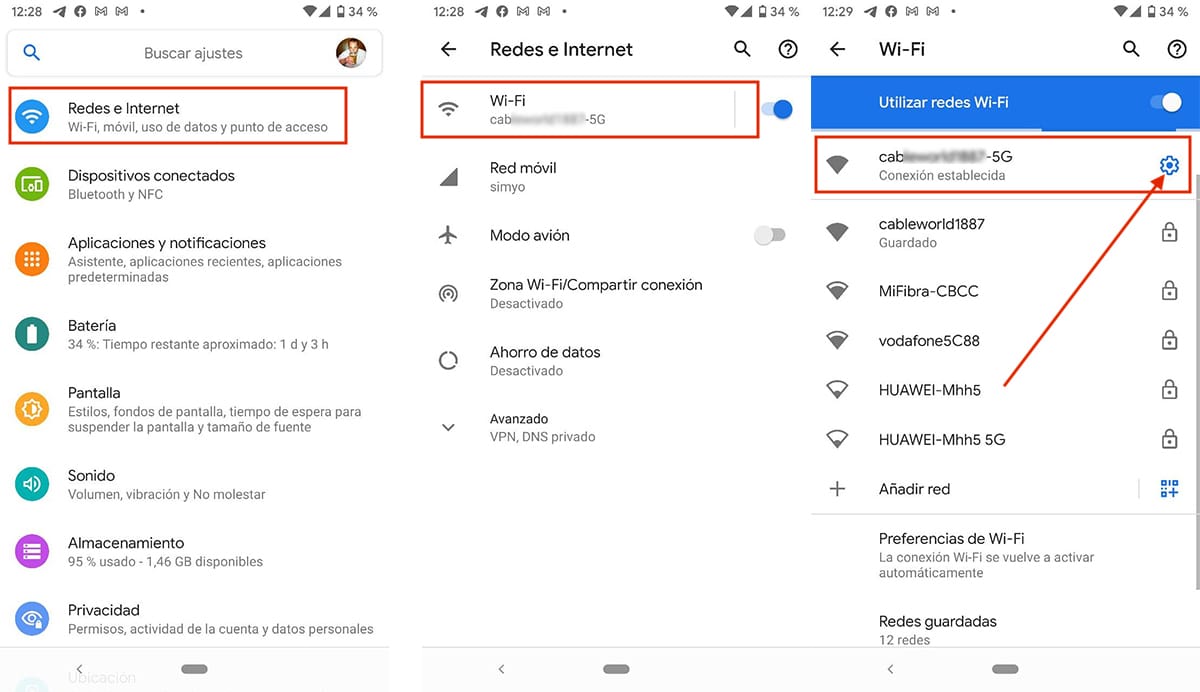
- We access the Settings of our device.
- Click on Network and Internet.
- Next, let's polish on Wi-Fi (We must be connected to the Wi-Fi network for which we want to know the password).
- Next, click on the cogwheel located just to the right of the Wi-Fi network name.
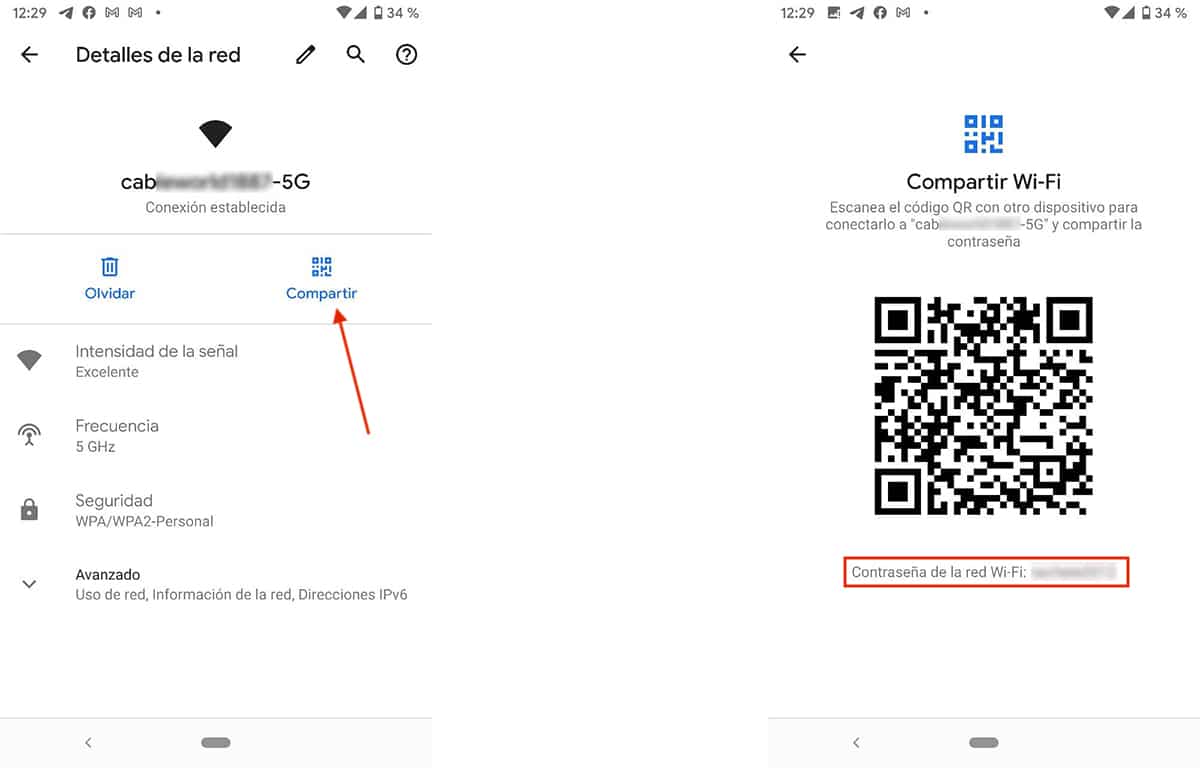
- In the window shown below, click on the button Share and we enter our terminal lock code (in this way it is ensured that we are the legitimate owners of the terminal and that we can access all its stored content).
- Finally, a QR code will be displayed that allows us to share both the name of the network and its password. Just below, the password for that Wi-Fi network will be displayed.
The only way to know the password for a Wi-Fi network through an Android smartphone is when we are connected to it. If not, we will not be able to access it unless we root in our terminal. ?
From your iPhone or iPad mobile
Through the menus that iOS makes available to us there is no method to be able to know which is the password of a Wi-Fi network, something quite absurd if we consider that if we can access all the passwords of the websites we visit.
The only way to access passwords for Wi-Fi networks stored on an iPhone and from an iPhone it's through the jailbreak and the tweak Wifi passwords. The jailbreak in iOS is like root in Android, a process that puts the security of the data of your terminal at risk and that is not always possible to do.
The only method to be able accessing Wi-Fi passwords stored on an iPhone is through a Mac, but previously we must have the Keychain function activated within the iCloud settings. This function is responsible for synchronizing both the keys of the Wi-Fi networks to which we connect and the web services that we visit.
From a Mac
As I mentioned in the previous section, to be able to access the passwords stored in our iPhone through a Mac (from the iPhone it is not possible), We must previously activate the Keychain option within the iCloud menu. If you use iCloud regularly, this tab will already be activated.
To access passwords stored on iPhone from Mac (all data is synchronized through the Keychain option) we must perform the following steps:
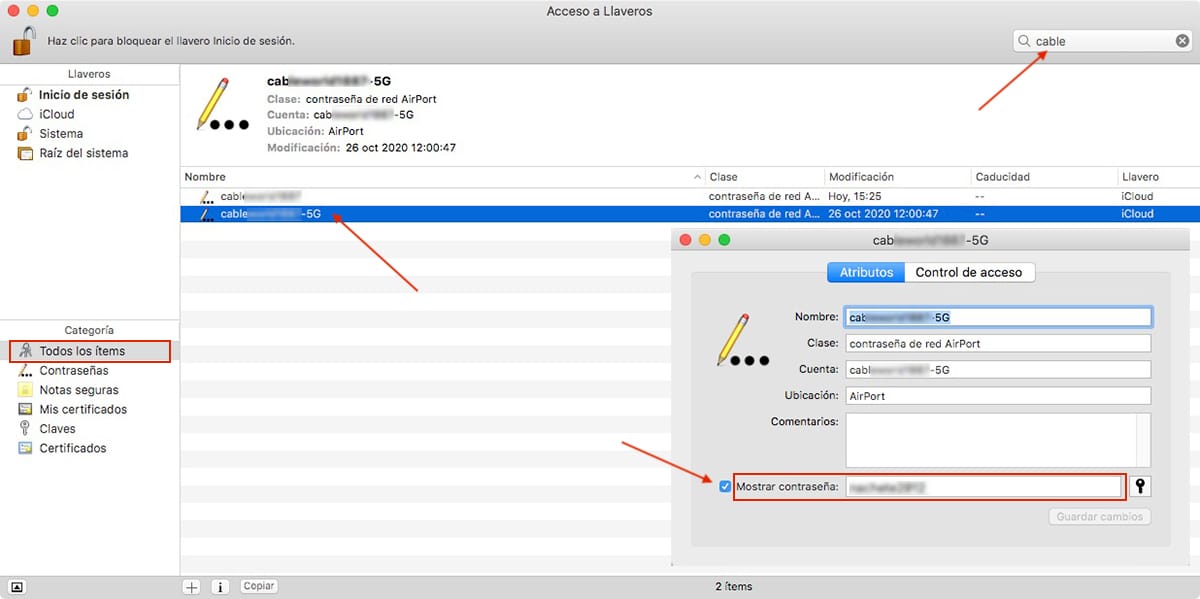
- We access the Launchpad and click on the folder Others.
- Inside this folder, we open the application Access to Keyrings.
- In the Category section, located in the lower left column, we select All items.
- In the right column, we address the search box and we enter the name of our Wi-Fi network.
- To access the password of this Wi-Fi network we must press twice on it.
- In the table shown with the data of this Wi-Fi network, we must check the box to show the password. At that time it will ask us for the password of the equipment, not the password of our Apple ID.
From Windows 10
In order to know the password of the Wi-Fi network to which our equipment is connected, the user account must be an administrator. If not, you will not be able to access the password for your Wi-Fi network.
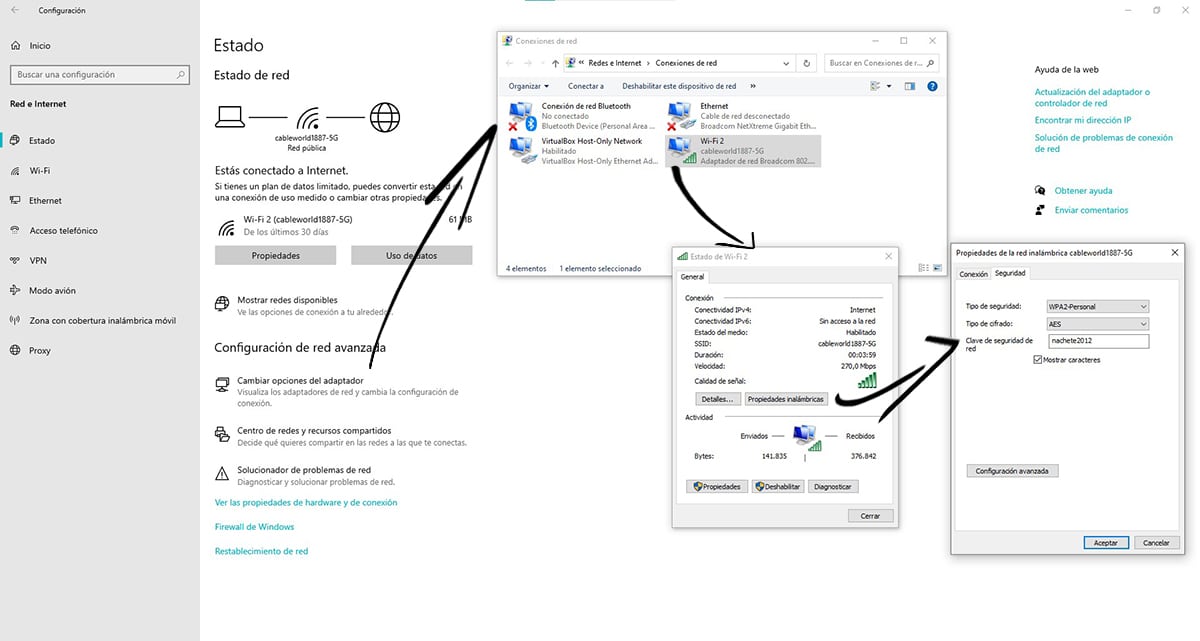
- The first thing we have to do is click on the icon that represents the Wi-Fi connection of our equipment with the right button and click on Open Network and Internet Settings.
- Next, within the section Network Configuration advanced click on Change options the adapter.
- Then a new window will open with the network connections of our team. We place the mouse over the Wi-Fi network to which we are connected and select STATUS.
- In the floating window that is shown, click on Wireless properties.
- A new window will open, where we have to click on the Security tab and check the Show characters box so that the password is displayed in the Network security key section.
From versions prior to Windows 10
Through Windows command lines, we can also access the Wi-Fi password of our connection. This trick it is valid for all versions of Windows, including Windows 10.
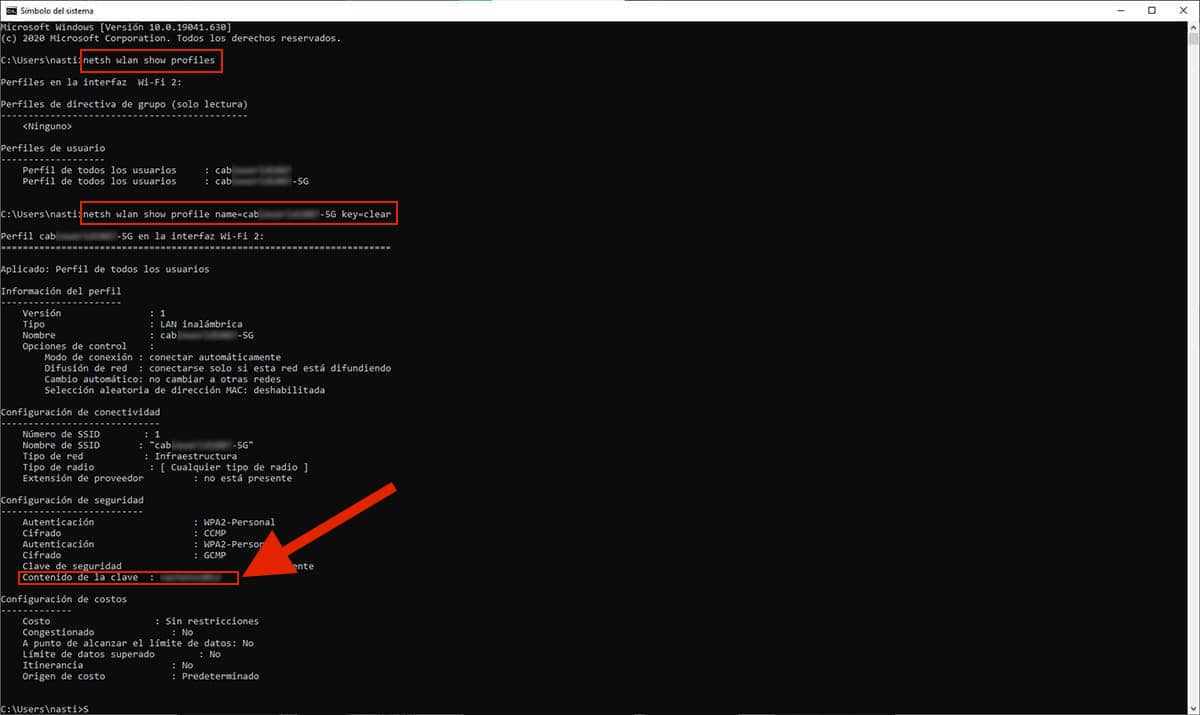
- We access the command prompt via CMD command, command that we will write in Cortana's search box.
- Next we write "netsh wlan show profiles" without the quotes to show them the Wi-Fi networks stored on your computer if we do not remember the name of our Wi-Fi network.
- Once you have identified the one that corresponds we write "netsh wlan show profile name = nombredelSSID key = clear" without the quotes.
This command will show us, in addition to the Wi-Fi password for that network, the type of authentication, type of encryption and the type of network.
Through third-party applications

If you do not want to complicate your life with the different options available to know the password of our Wi-Fi network in Windows, you can choose to third-party applications as WirelessKeyView.
In order to use the application, we must deactivate the antivirus beforehand, as it can be mistaken for a malicious application. If it's about Windows Defender, we must access the Protection History, locate the alternative of incidence, click on Actions and then on Allow on device.
The reason why Windows considers it to be a malicious application, like any other antivirus, is because access information for which we need administrator permissions, so if your account is not of this type, it is the best tool to know the Wi-Fi password of your device.